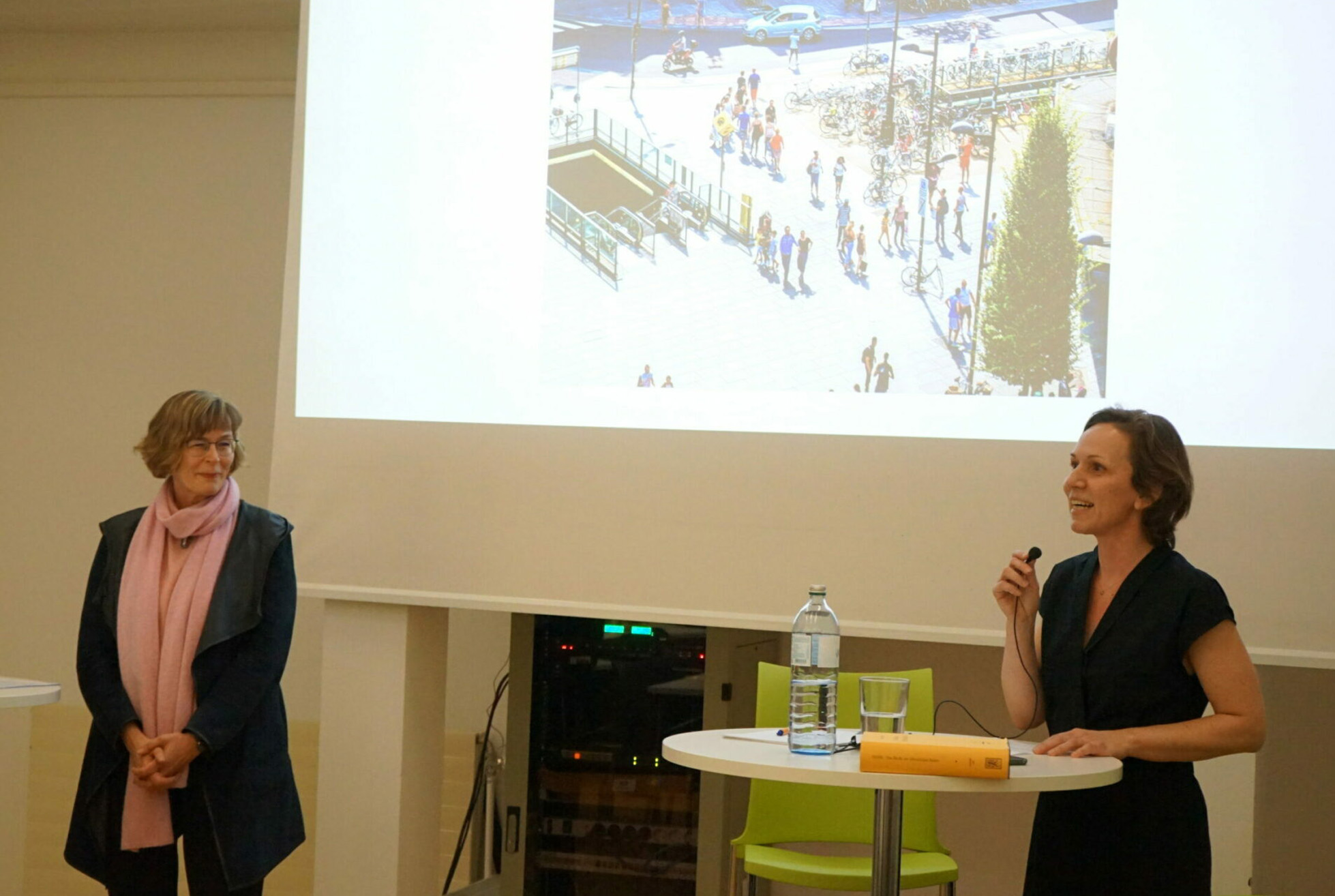“The right to public space”
Am 6. März 2024 wurde bereits zum dritten Mal zum Wiener Juristischen Salon eingeladen. Zu Gast war in dieser Ausgabe Univ.-Prof.in Dr.in Angelika Siehr, LL.M. (Yale), Professorin für öffentliches Recht, Völkerrecht und Rechtsphilosophie an der Universität Bielefeld.
The question of the right to and in public space then formed the core of the presentation. The right to public space should be geared towards equal and non-discriminatory access and equal participation in public space, while the right in public space safeguards the spatial dimension of all those fundamental rights whose exercise depends on public space, above all freedom of assembly. According to Prof. Dr. Siehr's considerations, the right to use and the right to dispose of land in public ownership are separate. This forms the basis of the two rights mentioned above: the right to public space as a right of access and use articulates the common character of public space; it follows from the citizens' right to use publicly owned property in conjunction with the principle of equality. The right to public space, on the other hand, is based on the idea that the legislative and executive branches only exercise their power of disposal over the beneficial ownership of public space in a fiduciary capacity and are therefore accountable to citizens. When it comes to denying the exercise of important fundamental rights such as freedom of assembly, the requirements for justification are also greater, whereas they are much lower for activities within the scope of general freedom of action. However, every prohibition of use requires justification in principle. In other words, the basic principle of general freedom of action is transferred to the spatial dimension of the exercise of freedom in public space. The right to public space thus follows from the citizens' right to use publicly owned property in conjunction with general freedom of action.
In Ihrem Vortrag zum Thema „Das Recht am öffentlichen Raum“ widmete sie sich dem Begriff des öffentlichen Raumes und seinen Funktionen (vor allem als Raum der Kommunikation und Grundrechtsausübung). Dabei ging sie zunächst in interdisziplinärer Perspektive auf die Entwicklung der Begriffe des Raumes und der Öffentlichkeit ein und zeigte auf, wie der relationale sozialwissenschaftliche Raumbegriff für die Rechtswissenschaft fruchtbar gemacht werden kann. Um das spezifisch Öffentliche des öffentlichen Raumes zu verdeutlichen, ging Prof.in Dr.in Siehr zum einen auf die altdeutsche Idee der Allmende im Sinne eines Raumes, der allen gehört und auf den jeder Anspruch hat, ein. Zum anderen beleuchtete sie das Öffentliche als eine spezifische Kategorie des politisch-sozialen Lebens, skizzierte im Zusammenhang mit der ‚Agora‘ als Versammlungsort Hannah Arendts Modell des öffentlichen Raumes und im nächsten Schritt das Verständnis von Öffentlichkeit bei Jürgen Habermas. Neben der wichtigen freiheitlichen und kommunikativen Funktion des urbanen öffentlichen Raumes, die seine hohe Relevanz für die Demokratie begründet, wurden u. a. auch seine Funktion als Raum der Gleichheit, Vielfalt und Urbanität – einschließlich der für gelebte Urbanität wichtigen funktionalen Entgrenzung von Nutzungen – und seine kulturelle Funktion als kollektives Gedächtnis des Gemeinwesens angesprochen.
The lecture was followed by a lively discussion with the audience of lawyers and spatial planners, in which issues such as conflicts of use in public space, the existence of a transnational public space, and the place of the fundamental right to freedom of movement in the concept of the right to public space were debated.


